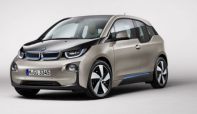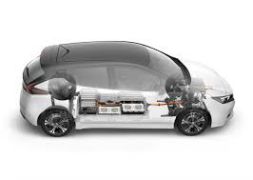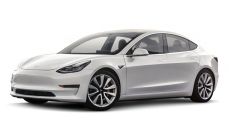
Module Lithium Métal Polymère BATSCAP


by integrating
- The projected drop in the price of batteries
- Lower prices excluding vehicle batteries (10% in 2015) due to the simplification of the architecture: replacement engine + injection, gearbox, clutch, exhaust catalysts .....
The chart below shows the trend against the price of car + battery from 2010 to 2030. Beginning in 2015, it is hoped that the price of V.E. is reduced to that of equivalent thermal model (hypothesis € 20,000). All things being equal, the price is assumed to tend to € 16,000 in 2030.


Module Lithium Métal Polymère BATSCAP
Traction BATTERY
Technical aspects.
Contains the traction battery of the vehicle on-board energy. Its capacity ranges from 15 to 30 kW.h surroundings, which corresponds to a range of 100 to 250 km by vehicle and driving cycle performed. Its mass, which is around 300kg, allows a low center of gravity, thus improving its handling. Its shape is adapted to the chassis (see Chevy Volt).
In case of short circuit following an incident, the battery could cause an incident similar to the explosion of a fuel tank. Certainly 30kW.h is only a power of 3l petrol (PCI), but capable of instantly releasing box short circuit for example.
The specific energy in kW.h characterizes the capacity of a battery to ship energy per unit mass. The comparative table below provides a comparison against the various battery technologies. Li-ion (and its variants) has a specific energy 3 times that of lead acid batteries. Also this technology allows a large number of charging / discharging, and has no "memory effect" (which characterizes the Technology brand Ni-Cd).
This technology has great potential: the CEA laboratory Li-Air: 2000 kW.h / kg ... almost as much as a liter of gasoline (2600kW.h / kg taking into account the motor efficiency.
Economics.
A concern that manufacturers have to challenge consists in the cost of batteries. At $1,000 per kW.h of energy on board, the cost is prohibitive. In the case of the Peugeot-Ion batteries, 16 battery kW.h a cost of € 12,000, which explains the advertised selling price of € 30,000. The mean price for fist half of 2012 is around $600 / kW.h.
However, Renault ZE FLUENCE announces at a price of around € 20,000 close to that of the thermal model ... but with the battery 22 kW.h for rent. Indeed, the price of them is close to € 17,000 in 2010. The total selling price of € 37,000 car probably would mortgage the commercial success. However, by 2015, if the predictions of lower cost batteries have proven a viable commercial offering including batteries will be possible soon.



Electric and hybrid vehicules technology





Réalisations